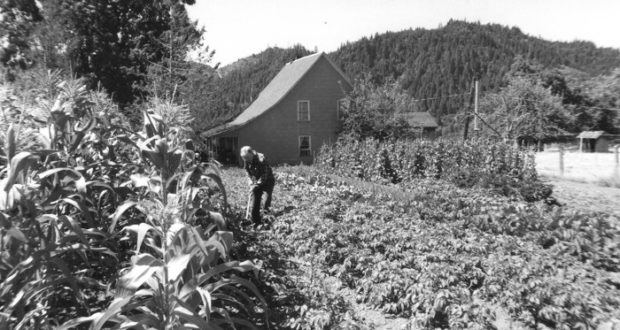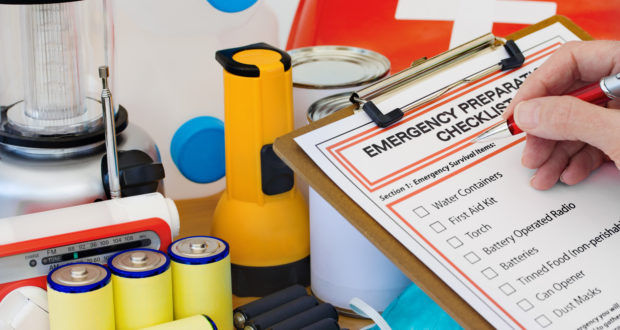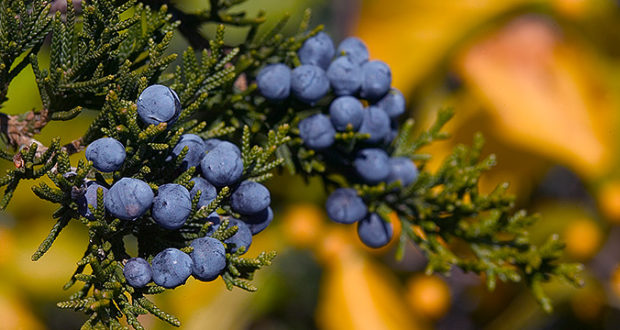Woodworking is my hobby, so I’m fascinated by all things wood. Long ago, I realized the value of this in survival, as in pretty much any survival situation, we’re going to find ourselves using wood, if for nothing else, then for building fires. But we might find ourselves needing to build shelter and furniture out of wood as well. Doing that with the few primitive tools that we carry along for survival will be challenging, to say the least.
But knowledge is power and knowing what to do, in order to get the most out of the wood that we find in the forest, can go a long way towards helping us get the most out of that wood. Here are a few important tips for making your own woodcutting easier and more effective.
Moisture Content
All wood has moisture in it; but just how much moisture affects how we work with that wood and how we can use it. Freshly cut wood will generally have a moisture content of 100%, which means that half that wood’s content is water. By comparison, wood bought at the lumberyard will have a moisture content of 6 to 12%.
Wet wood doesn’t burn well, so it doesn’t make sense to cut a tree down and try to use it for firewood. Our ancestors, who did cut trees for firewood, usually cut the trees during the wintertime, splitting and stacking that wood for the next winter’s use and giving it the better part of a year to dry.
In a survival situation, we’re better off using deadfall trees and limbs for firewood. The only problem is that if the trees have decayed too much, the wood that is left might burn too quickly, not providing us with much fire. But there may even be parts of a rotted deadfall tree that are still solid, seek those out and use them for your fire.
If you have to use damp wood for your fire, place the damp wood near the already burning fire, so that the heat from the fire can help to at least partially dry out that wood. Even so, expect it to make a lot of smoke when it is thrown on the fire.
While freshly cut trees aren’t good for the fire, they can be good for building. Most log cabins are built from freshly cut logs. Even if those logs are allowed to sit for a year to season, they will still have a high moisture content, as they don’t dry that quickly.
But that high-moisture-content wood can be easier to shape than dry wood. Tapering the end of a sapling that will be used as a chair back spindle is easier when the wood is still wet, than when it dries. However, we must remember that the wood will shrink when drying.
Drying and Shrinking
All wood dries when it shrinks; the question is just how much is it going to dry. That depends a lot on the type of wood, as some types shrink more than others. Oak, for example, doesn’t shrink as much as pine. Logs don’t dry at an even rate either, with the ends of the logs, where the end grain is exposed, drying faster than the center of the log. Peeling off the bark will help the logs to dry faster.
As logs shrink, they tend to split. This is because the outer rings are trying to shrink faster than those closer to the center. The hard center of the log, called the “pith” can’t compress, so the only alternative for the outer parts of the log is to split, as the rings shrink in circumference. Take a look at any old log cabin and you’ll see that the logs are split.
We can cut down on the amount of splitting by splitting the logs ourselves, before they dry. Most logs used for building cabins or furniture are straight logs, with few knots. That means the grain is running straight and true down the length of the log. This makes it easy to split the logs with wedges, as the split will usually follow the grain, giving us a fairly straight surface. Several such splits in the same log turns it into thick boards, without the use of a sawmill.
If we want to use those boards for furniture, we need to allow it to dry first or the furniture we build will just fall apart when the wood does dry. Planks of wood will dry at a rate of about one inch of thickness, per year, if they are kept in, out of the rain.
Those boards need to be stacked level, with sticks between them, so that air can pass through, drying both sides of each board. In a workshop, scrap wood is cut to a uniform thickness, making those sticks. In the woods, that might be harder to accomplish.
Heat can also be used to dry wood, although there are some risks associated with it, as drying too quickly can cause twisting, warping and splitting. But if you’re trying to make furniture for your log cabin, out of trees that you’ve cut, you probably aren’t going to wait a year or two for that wood to dry. Rather, you will want to dry it over a fire, supporting it well and turning it occasionally to help prevent warping.
Axe Selection and Sharpness
The blades we choose must match the work that we are going to do. There’s a distinct difference between the blade of an axe and the blade of a maul. The axe, which is designed for cutting down trees, has a thinner blade, making it easier for that blade to go into the wood, cutting the wood fibers. A maul, on the other hand, is intended for splitting wood. It has a wider, wedge-shaped head, which is heavier than the axe head. When splitting wood, the heavier head sinks deeper into the end grain and the wider wedge shape puts more sideways pressure on the fissure created, helping to cause the wood to split.
In a survival situation, we would probably need both an axe and a maul. The axe would be used to cut down trees and the maul to split sections of logs for firewood. Splitting wood makes it burn better, as it gives the fire direct access to the heartwood. Splitting the wood with the axe would be much harder, as it would be necessary to drive the axe head farther into the wood, in order to get the wood to split.
Many preppers have taken to carrying a tomahawk, rather than a hatchet, in their BOB. The problem with this, is that the tomahawk is a weapon, not a tool. It has a very narrow blade, which doesn’t really work well as a substitute for a hatchet (small axe) and even less well as a substitute for a maul.
Many people never sharpen their axe or hatchet, which means that it gradually gets duller and duller. A dull blade never cuts as well as a sharp one. These tools are made out of steel that’s not super hard, so they are easy to sharpen, either with a file or a grinder. If you’ve got a hatchet in your BOB, be sure to bring a flat file along for sharpening.
Saw Selection
The purpose of a saw, in a survival situation, is to cut logs to length, either for use in construction or for use in the fire. Cutting a log into sections for firewood is called “bucking” the log and used to be done with a bucking saw. This is still the best manual saw for the job, but a bit bulky to carry around, strapped to the outside of your BOB.
Another alternative to this is to use a bow saw, of the kind that people use to cut dead limbs off of trees in their backyards. Bow saws are compact, lightweight and inexpensive. Yet they do the job well, as long as the log being cut is no more than about six inches in diameter. They’ll even fit in a BOB.
For a more portable saw, I’d recommend buying a folding pruning saw, rather than one of the saws advertised for survival. The folding pruning saw is faster to work with and will also allow you the versatility to use it for other types of cuts, instead of just cutting of branches to length.
What About a Chainsaw?
Chainsaws have a limited practicality in survival. They’re great for prepping and every prepper should have one for that. Having a chainsaw allows us to go cut down dead trees, which we can then convert into firewood for our own use. Doing the work ourselves saves us from having to buy firewood, paying someone else for their work.
But once a crisis hits, that chainsaw is only going to be usable as long as we have gasoline for it. Since gasoline doesn’t keep well, we can’t count on using it for long. We certainly can’t take it off to the woods with us on a bug out and expect to build a log home.
By the way, if you have a chainsaw, please learn how to sharpen it. The chain for your chainsaw should last for years. I know a man who used to be a professional lumberjack. His dad only allowed him to have two chains, replacing one of them each year. He had to keep those chains going by sharpening them daily. It only takes a few minutes and will take a lot of strain off your saw.
The Drawknife
Logs that are stripped of their bark will dry faster than logs that have the bark on them. If you look at old log cabins, they all have the bark stripped off the logs. Likewise, furniture that is made of sticks and logs has the bark stripped off. This is because the bark doesn’t shrink at the same rate as the log and decomposes faster. If it is left on, it will end up separating from the log, possibly weaking whatever has been built.
The drawknife is a straight blade, with angles on either end, perpendicular to the blade. Its name comes from how it is used, drawing the blade towards you. Yes, this is the one time when it is okay to pull a knife towards your body. Properly sharpened and used, a drawknife will make short work out of peeling the bark off a log.
The Chisel
There’s one other tool you’ve got to have for the rustic sort of woodworking that goes with survival; that’s a chisel. Actually, you might want a few different sizes, including a large “timber chisel.” These will allow you to do a lot of shaping that can’t be done with other tools, such as cutting the notches used to stack logs together when making a log cabin. Pretty much anything can be fitted together with a good saw and a chisel.
Chisels can also be used to smooth the roughness where boards or slabs have been split from logs. They aren’t as good at this as a plane, so won’t get it perfectly smooth; but they can get it fairly good, especially in the hand of someone who knows how to use one.
Your Knife
Somewhere in all this, you’re going to be using your knife for working wood. Whatever knife you choose, make sure it’s a good one, with a full-tang blade. Serrated knives aren’t usually as good for working with wood as sharp ones are; but you’ve got to find what works for you. Just make sure you’ve got a good honing stone in your BOB, so that you can keep your knife sharp.









